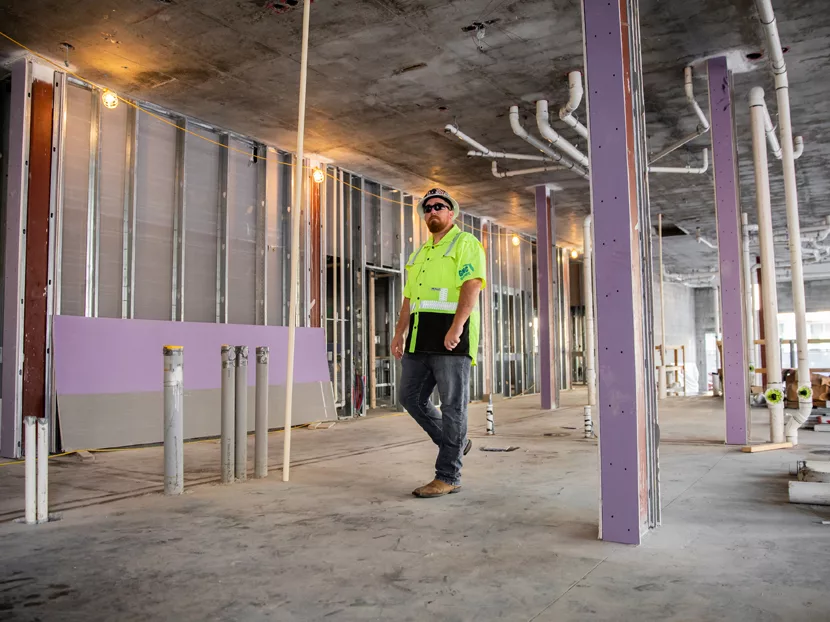When performing firestop installations, there are a few different industry-standard sealants to choose from: silicone and water-based intumescent or acrylic sealants. Depending on the type of penetrating item you’re working with, the budget or what’s most convenient for the specific job, you may choose one over the other.
Here are some basic questions to ask when picking a proper firestop sealant for an application:
• What is the curing time? If you need a fast cure, such as three or four days, then you’ll want to pick a silicone sealant. Additionally, silicone sealants offer a more diverse application temperature range than standard acrylics or intumescent sealants.
• What is the budget? Silicone sealants are more expensive than intumescent or acrylic sealants, but they also have different abilities and limits to consider.
• What aligns best with the project’s needs? Your first reference point is the 078400 specification section from the architect to see which material is specified. Then you can consider other details, such as if movement is expected to occur around penetrating items. If so, a silicone sealant may offer more movement capabilities than standard intumescent sealants offer.
• Do I need a self-leveling or a caulk-grade silicone? A self-leveling sealant is ideal for floor applications where it might be difficult to reach penetrating items or when professional looks are required. A caulk-grade non-sag silicone sealant can be used in either walls or floors.
In floor applications, a self-leveling sealant saves time by reducing the amount of labor required to “tool” the sealant within the opening.
Water-repellant sealant
For those in humid or rainy areas of the country, there is one other factor to consider when picking your firestop sealant: a UL-tested and -listed W rating. It’s imperative for keeping work and the overall project's progress safe from water damage, which can lead to expensive repairs. If penetrating items are expected to be subject to heavy moisture or standing water either during or after the construction phase, silicone sealants offer protection in these types of conditions.
In fact, some projects even require a W-rated sealant per the specification sheet. Other jobs may require every third or fourth floor to be W-rated. Even in areas that don’t anticipate a lot of rainfall during construction, some buildings — no matter where they are — require water-repellant sealants for parts of the project where there are several water lines, such as a bathroom.
Though there are some intumescent W-rated sealants, you’ll most likely find water-repellant silicone sealants because silicone repels water far better than water-based sealants do.
What is a W rating?
Just because a sealant is water repellant, however, doesn’t mean it’s W-rated.
Underwriters Laboratory created a testing standard, a Class 1 W rating, to prove a product’s ability to protect against water from floor to floor. No current code requirements specify a W rating, but it is something project owners and stakeholders have asked for over time.
A Class 1 W rating means the firestop product has been subjected to three feet of water pressure for 72 hours, according to UL 1479. During the 72-hour testing time frame, not a single drop of water is allowed to pass through the firestop assembly. If water passes through it within that allotted time, it’s recorded as a failure.
There’s no substitute for quality. To find a premier sealant, first look for out-of-the-box W-rated solutions that don’t require additional accessories. Look beyond the product and, instead, evaluate the manufacturer.
Does the manufacturer have a proven track record of reliability in various firestopping solutions? Have you used other of its products and been satisfied with the quality? If not, what do other contractors have to say about using multiple products from the brand?
If you or other contractors are confident in the quality of the manufacturer's solutions across various product categories, you may choose to source all firestopping products from one trusted source. Not only does this give you peace of mind, but it also can make the job easier since you’re working with a single source that has designed solutions to work together seamlessly.
Jeff Hamilton is the fire stop product manager at RWC, a manufacturer of water control systems and plumbing solutions for residential, commercial and industrial applications.





